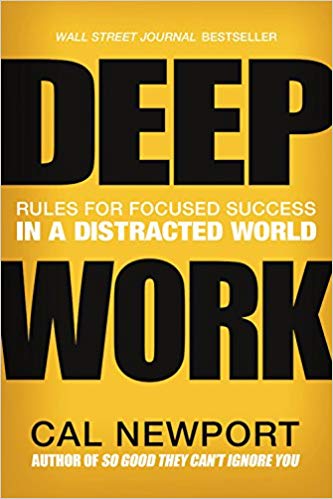
Brainstorming is that chaotic first step where writers ask themselves the almighty question: what do I want to write? We sometimes get these answers when we least expect them as flashes of insight, glimpses of scenes that seem so perfect that you can’t help but get excited about them. But these eureka moments are few and far between. What if there was a way, a process or a ritual in which you could consistently funnel out these dramatic scenes?
There is. It’s called “going for a walk”.
Scenes I Want to Write
When I’m writing a new book, the very first thing I do is create a list. Not a list of characters or choices or themes I want to explore but of scenes I want to write. These scenes vary drastically in scope from a hair-cutting sequence with a stubborn grandma to a demonic sword technique to be used on the final boss. I’m not worried at all at this stage on how I’m going to stitch it all together or whether any of it makes sense. The most important thing I can do is to step aside and let the scenes flow out freely.
If it sounds like I’m surrendering control to my subconscious mind and just hanging around for the ride, you’re mostly right. But an idle mind is the devil’s playground; the subconscious mind is immensely powerful yet useless unless pointed in a conscious direction. In case you’re wondering: you can guide your thoughts. It is a skill and it can be trained, and it is a requirement if you intend to harness the chaotic storms raging in the depths of your mind.
And trust me: that’s where all the good stuff is.

Walking It Out
All the brainstorming done for Samurai of Hyuga Book 5 was done on walks around my parents’ house–a cabin in the woods. The path I go on is a hunting trail and aside from deer, squirrels and the odd turkey, I’m absolutely alone. The leaves on the trees are stunning in the fall while in the winter the cold keeps those god-forsaken gnats at bay. My route takes about 40 minutes to walk at a relaxed pace.
But if I’m doing it right, I’m usually not back until an hour-and-a-half later. That’s because I’m constantly stopping myself, writing down the scenes on my iPhone’s Notes app as they come. I have no wifi or 3G out there, and, no matter how pretty the forest is…
…I’m absolutely bored. And that’s a good thing!
Letting Yourself Be Bored
People these days are deathly afraid of being bored. Stand in any line at Chipotle or sit on any bus and you’ll see that just about everyone has their heads tilted down into their phones. Whether they’re playing gacha games, swiping left or messaging friends, everyone is trying to escape from even a moment of boredom. God forbid we have a second of introspection!
This is our reality in 2020. Our culture revolves around being constantly distracted, and the consequences of that are sure to lead humanity down some dystopian future. But let’s focus on the present and the opportunity this culture presents us: there is a greater demand than ever before for those who allow themselves to be bored (this is also called an attention span).
Constantly distracted people make for perfect consumers but terrible creators. The reason comes down to something Cal Newport calls ‘Deep Work’.

Deep Work: Rules for Focused Success in a Distracted World
“Deep work is the ability to focus without distraction on a cognitively demanding task. It’s a skill that allows you to quickly master complicated information and produce better results in less time. Deep work will make you better at what you do and provide the sense of true fulfillment that comes from craftsmanship. In short, deep work is like a super power in our increasingly competitive twenty-first century economy.”
Books, graphic novels, apps and games–these are all products of deep work over lengthy periods of time. In fact, just about anything worth making and absolutely everything worth buying is. This isn’t emails, spreadsheets or busywork. This is the real deal: the stuff that requires active energy and focus but in return gives you an immense sense of satisfaction.
Cal Newport suggests four rules that you can implement to help increase your ability to perform deep work. They are as follows:
Rule #1: Work Deeply
There’s a resistance inside everyone when it comes to working deeply. Why wouldn’t there be? It’s tough, there’s no immediate payoff, and the dopamine sensors in your brain have a hundred more fun things for you to do. To help reduce this resistance, create rituals and routines that make working deeply easier. When it comes to willpower, good habits are like cheatcodes.
Rule #2: Embrace Boredom
Break the habit of giving in to distractions at the first sign of boredom. Over time, this will rewire your brain and help your concentration when it’s time to work deeply. Embracing boredom has everything to do with delaying gratification.
Rule #3: Quit Social Media
Social media is addictive for about a million different reasons, many of those tied to our very human nature. You can’t help to resist it when its blinking on an internet tab or when it sends an alert to your phone every time there’s a new doggy pic. So instead of trying to go on a diet with donuts beside your desk, stop buying pastries from the grocery store in the first place!
While you don’t have to quit cold turkey, forbidding yourself to check up on Facebook, Discord, Google Chats and so on until after lunch will make your mornings more productive than you could ever imagine.
Rule #4: Drain the Shallows
‘Shallows’ refers to shallow work, which includes writing and sending emails, making phone calls, and attending meetings. Basically, it’s work but the tasks are lower value, time-consuming, and don’t require the mental effort and focus that deep work does. They’re a necessity but they shouldn’t consume your day and interrupt your time dedicated to deep work. Schedule your time and try to minimize the shallow stuff!
Conclusion
Take control of your time, free yourself from distractions, and go take a walk. Do some thinking out there and you’ll be amazed at what pops up in your head!


Recent Comments